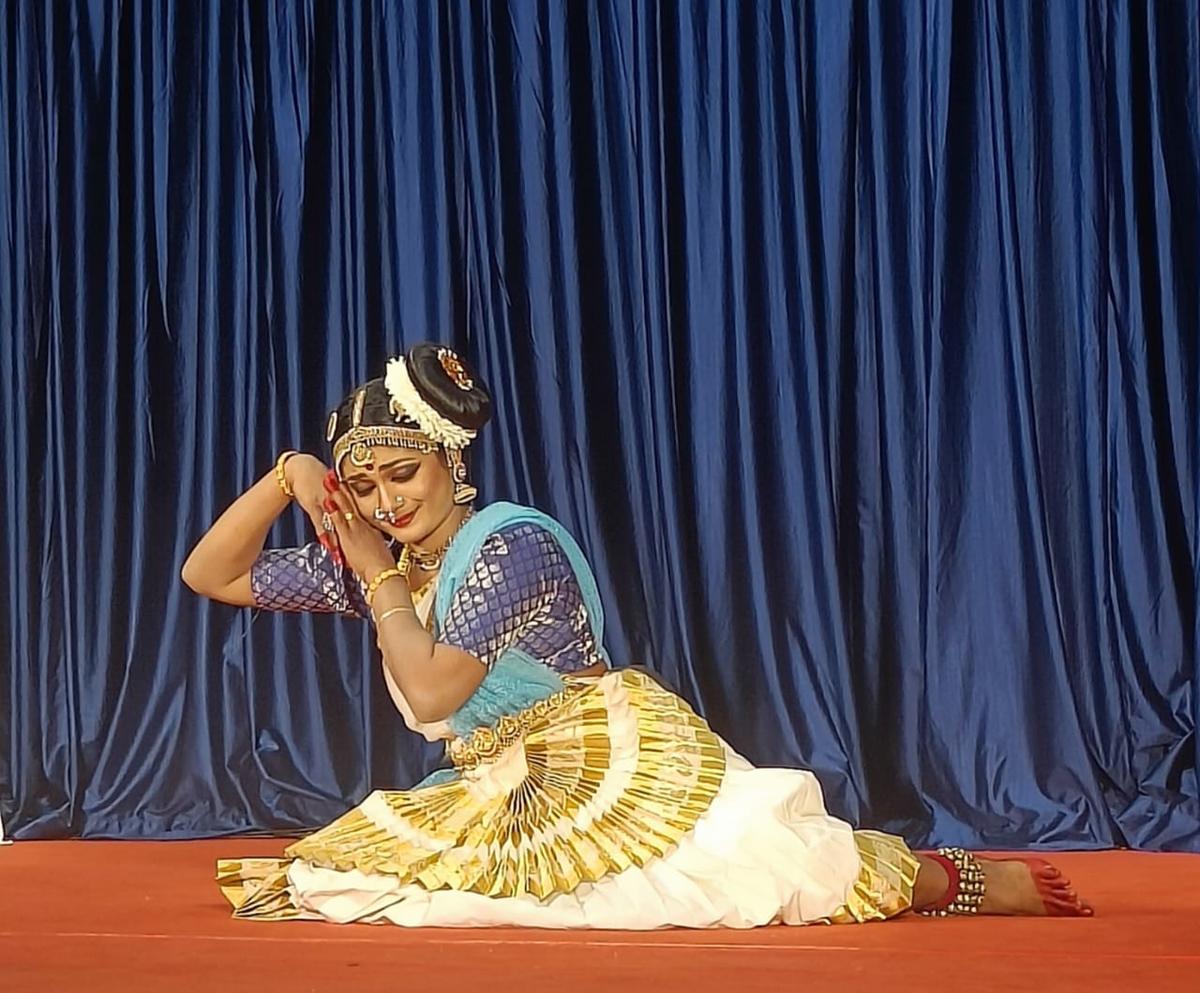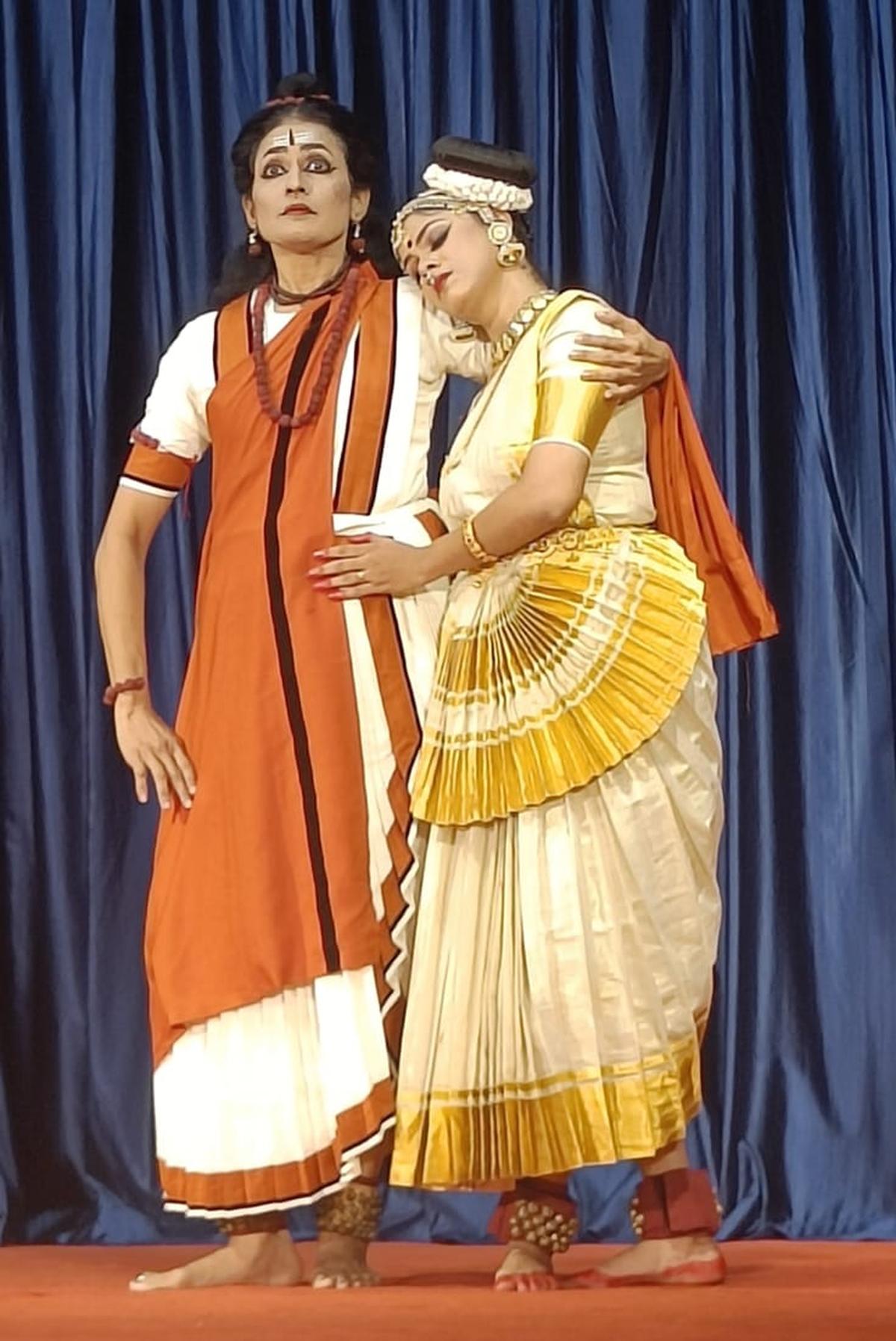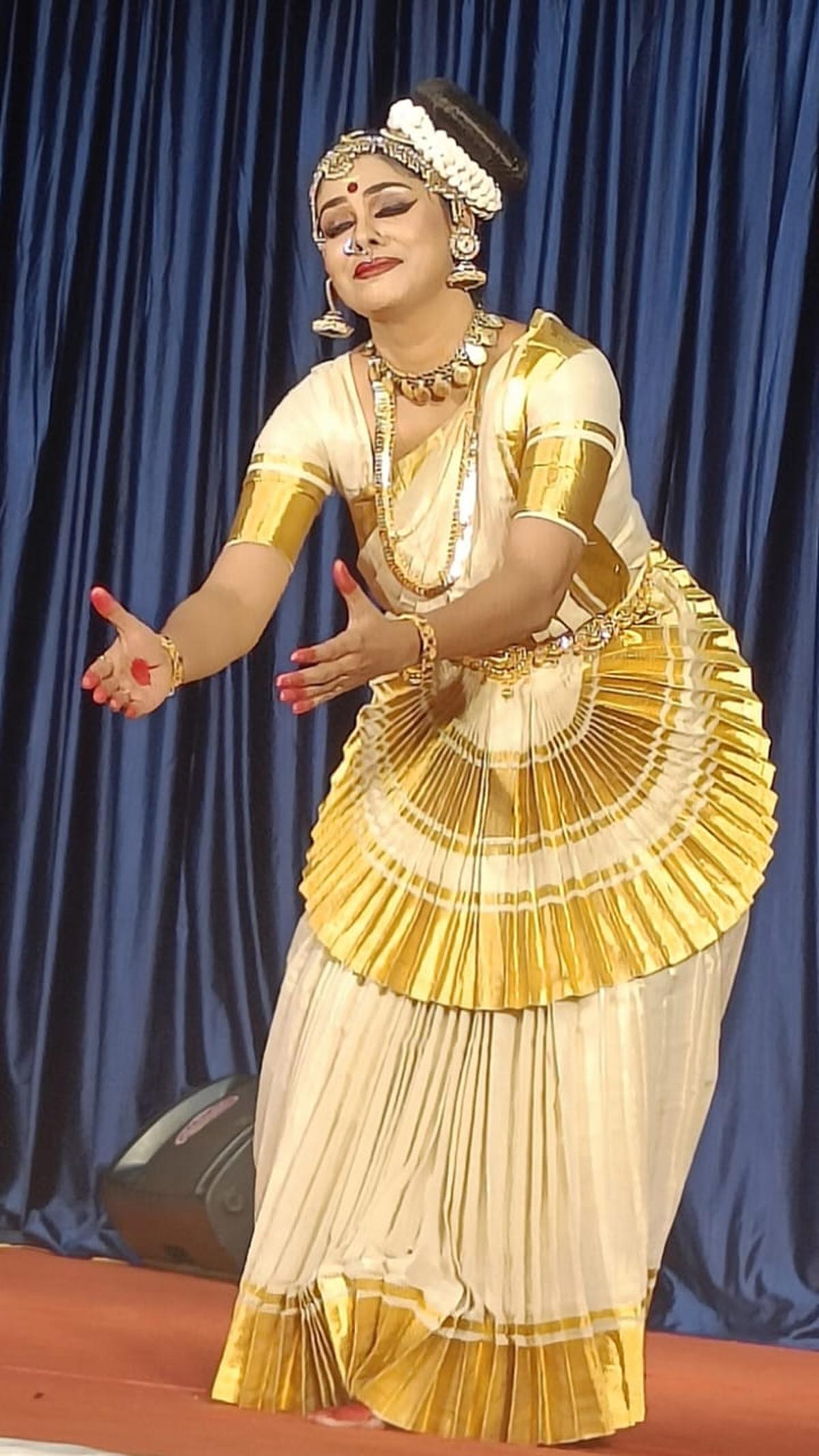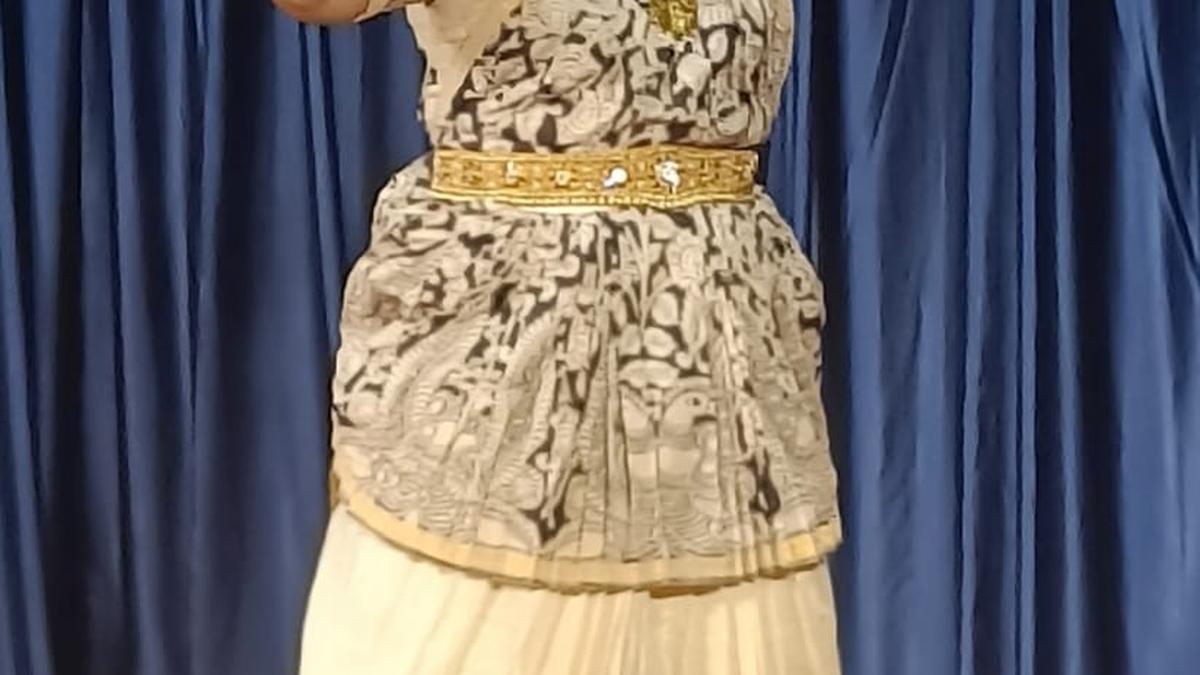Priya S Nair chose the poem Duravastha
| Photo Credit: Special Arrangement
Most Mohiniyattam performers in their effort to present something new, do not seem to be paying much attention to traditional pieces.
Hence, ’Kavya nritarchana’, based on three prominent works of legendary Malayalam poet Kumaranasan, made for a delightful watch. Conceptualised by guru Kalamandalam Sugandhi, it was organised by BEAME (Bank Employees’ Arts Movement) at TDM Hall in Kochi. The passages presented included a mix of original poetry and adaptations.
Duravastha, Nalini and Leela talk about love from a social perspective. Kumaranasan’s poetry is celebrated for its message of social renaissance, rich imagination and romanticism. His association with Narayana Guru reflect in his verses.
Savitri, the heroine of Duravastha, is a Namboothiri woman, who flees when her house is looted and her family is killed during the Mappila mutiny . Priya S Nair portrayed Savitri, who seeks shelter in a Dalit youth Chathan’s hut and falls in love with him. But for the few nritta segments thrown in between, the piece was dominated by acting and drama. The non-metrical structure of the adapted poetry, which bordered on prose, was not set to rhythm, slightly diminishing the impact of the performance. The vinyasam segment, where Savitri teaches alphabet and Math to a distracted Chathan, was interesting, showing the character’s transformation. The presentation closed with the famous lines ‘Mattuvin chattangale’ (change the norms). Priya’s costume too exhibited the change. There were prints on the usually plain off costume costume.
Guru Sugandhi is known for her efforts in codifying the adavus of different Mohiniyattam style. One of the earlier students of Kalamandalam, she has worked closely with the veteran dancer-scholar Padma Subramaniam, studying hastas and karanas, and has translated the latter’s work Bharata Kala Lakshanam into Malayalam.

Kalamandalam Sisira and her evocative Leela
| Photo Credit:
Special Arrangement
Kalamandalam Sisira came up with a striking performance in Leela. Leela gets separated from her lover Madanan as she is married off to another man. But her husband dies soon after. Sisira shifted roles with ease, portraying Leela, Madanan and her husband with equal flourish. During a chance meeting, Madanan fails to recognise Leela. He later commits suicide by drowning in the Narmada; Leela follows suit. Sisira internalised and expressed Leela’s emotions. The whole performance was presented as a monologue by Leela’s soul, walking along the Narmada, urging the river to tell her story.

Devika and Sudha Atmaram in Nalini
| Photo Credit:
Special Arrangement
Nalini, with its philosophical overtones, is arguably Kumaranasan’s best-known and admired work. Devika and Sudha Atmaram donned the roles of Nalini and her ascetic-lover Divakaran. Nalini adopts yogic practices after being rescued by a yogini from a suicide attempt. She meets her childhood sweetheart Divakaran, who is now an ascetic.
The nayika entered the stage with a gait that follows Kundanachi tala, which is native to Kerala, and a mix of khanda and misra nadais.
Divakaran is surprised at the yogic transformation of Nalini, who is still pining for his love.

Devika Atmaram conveyed well with her expressions
| Photo Credit:
Special Arrangement
The climax sees Divakara yogi helping Nalini on her path to salvation. The dramatic highpoints were not utilised well in this piece. However, the dialogue between the two characters, though short, communicated the theme effectively. ‘Snehamaanakhilasaaramoozhiyil’, Asan’s lines that extol love’s dominance in the universe, brought the dance piece to a climax.
Published – September 09, 2024 07:02 pm IST

